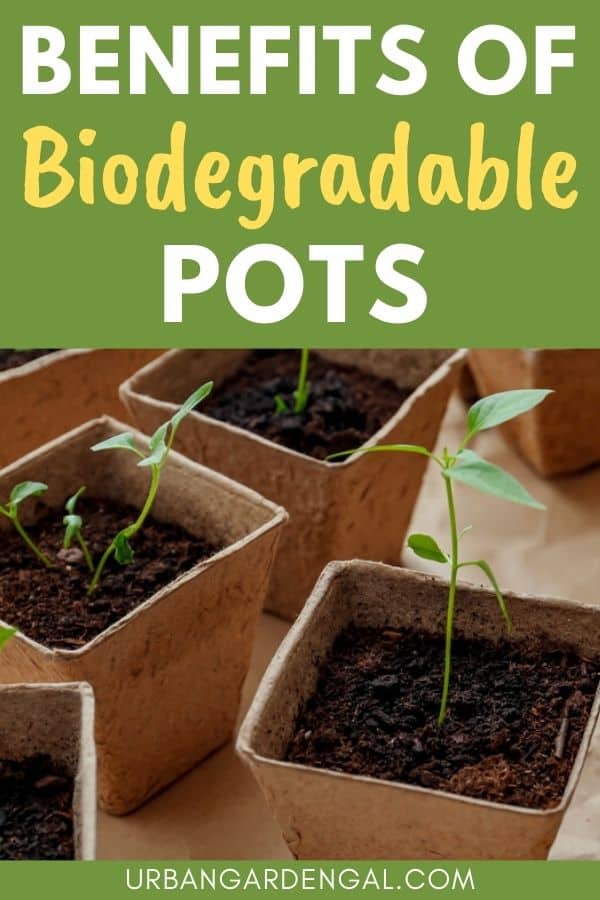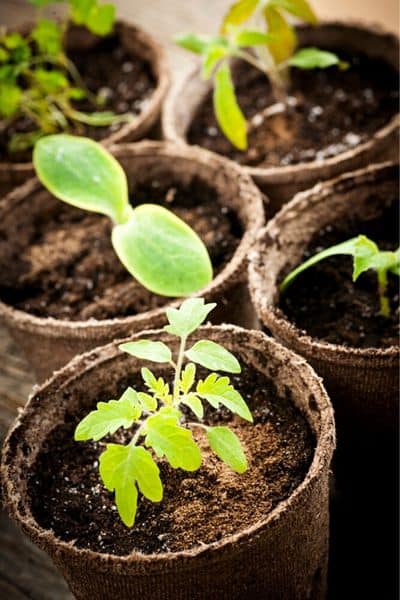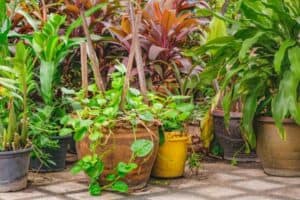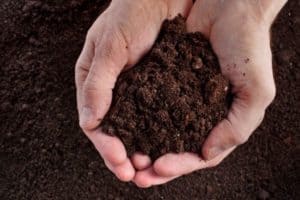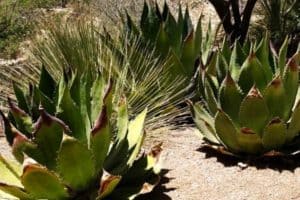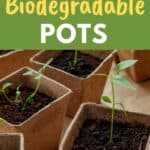If you’re looking for an environmentally friendly way to garden, try using biodegradable pots as an alternative to plastic pots.
Biodegradable pots are made of natural materials like coconut fiber, peat, and wood pulp, which can be broken down by microorganisms in the soil.
This makes them a more sustainable option than traditional plastic pots.
In this article I’ll list the benefits of using biodegradable pots in your garden.
This post contains affiliate links. Please read the disclosure for more info.
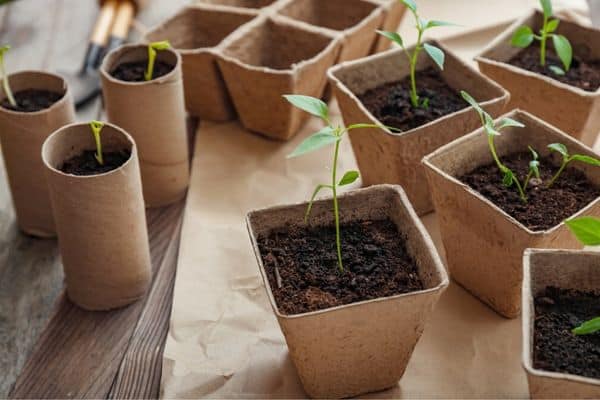
BENEFITS OF BIODEGRADABLE POTS
Biodegradable pots, also known as compostable or plantable pots, are made of natural materials, such as wood pulp, cardboard or bamboo, which can be broken down over time by microorganisms in the soil.
They don’t require any harsh chemicals or treatments during production and they decompose naturally, without leaving any harmful residue behind.
The natural materials also enrich the soil with nutrients that can benefit your plants.
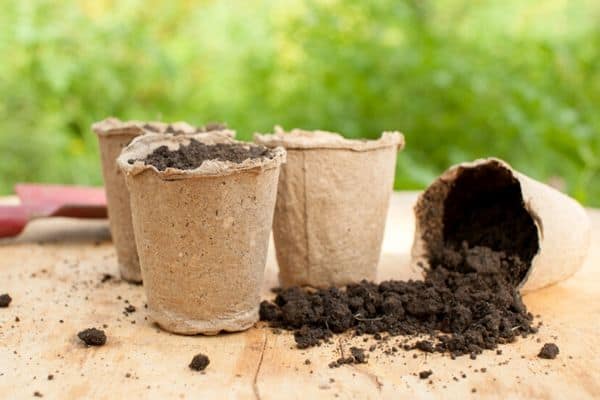
Plants grow more vigorously in compostable pots, due to the increased air flow and drainage.
Biodegradable pots are less likely to cause root damage when transplanting seedlings out to the garden because the whole pot can be planted in the garden.
You can avoid plastic waste by using biodegradable pots as they decompose naturally over time, eliminating the need for disposal or recycling of traditional plastic pots.
They are also cheaper to produce than regular plastic pots.
Biodegradable pots are lightweight, which makes them easy to move around the garden and transport from one location to another.
Another benefit of biodegradable pots is that they don’t need to be washed. This helps to reduce water consumption and saves you time.
 Types of biodegradable pots
Types of biodegradable pots
Biodegradable pots can be made from a variety of natural materials including coconut coir, rice hulls, bamboo pulp and wood pulp.
You can also make your own homemade compostable pots using toilet rolls or newspaper.
RELATED: How To Make Toilet Roll Pots
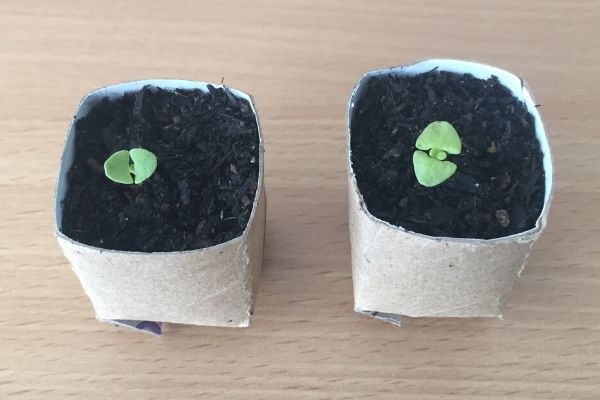
How to use biodegradable pots
Biodegradable pots are ideal for seed starting but it’s best to use sturdier cardboard pots for seedlings that take longer to mature, such as celery or asparagus.
Fast growing plants like radishes can be planted in thinner pots, like newspaper pots, because they’re only in the pot for a short period of time.
1. Fill the pot with a quality seed raising mix that is easily draining, such as a mixture of vermiculite, perlite and coconut coir.
2. Plant the seeds following the instructions on the seed packet and lightly tamp down the soil.
3. Water thoroughly using a spray bottle and place the pot in a brightly lit spot.
Plants in natural pots dry out faster than plants in plastic pots, so it’s essential to keep them well watered, out of the hot sun and protected from drying winds.
Before you transplant your seedlings outdoors, soak the biodegradable pot overnight in a bucket of water to soften the pot.
The following day you can plant the seedling, pot and all, into the garden.
As the seedling grows, the roots will push through the sides of the pot and spread out into the surrounding soil.
The pot will eventually decompose, enriching the soil with nutrients.
Just make sure that the pot is completely covered with soil so that it can decompose properly.
RELATED ARTICLES
- Self Watering Pots – Pros & Cons
- How To Care For Hanging Baskets
- 10 Upcycled Planter Ideas
- 15 Space Saving Garden Planters
Using biodegradable pots in your garden is a great way to reduce plastic waste and help protect the environment.
If you’re looking for an eco-friendly way to grow your plants, biodegradable pots are a great option that can help to reduce your environmental impact.
Have you tried using biodegradable pots to start your seedlings? Let me know in the comments below.
Are you on Pinterest? I have boards dedicated to Sustainable Gardening and Garden Ideas that you may enjoy. You can also find me on Facebook.
